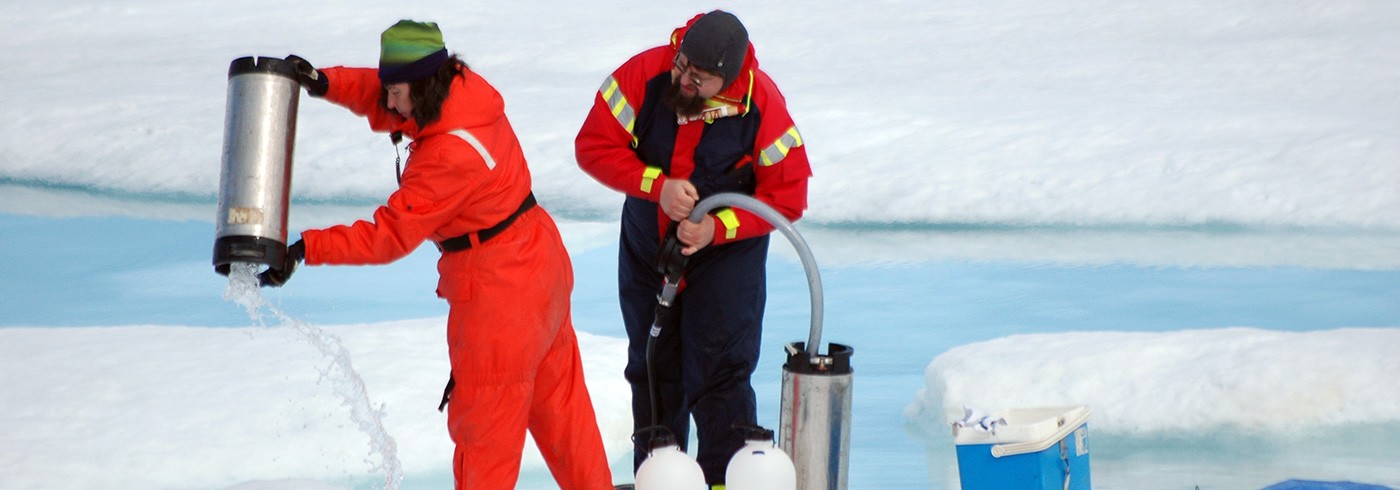Marine research during Beringia 2005 was pursued mainly within this theme. Research projects had to do with pollution and environmental toxins and the relationship between climate change, organic substances and nutrients in the sea.
The questions studied included:
- To what extent does the natural biogeochemical cycle in the Arctic Ocean affect the global and local climate?
Quantifiable climate changes arise for reasons including human activity, but there are also many natural processes that affect events. - What pollution and heavy metals are present in the world’s cleanest ocean, and why?
Levels of some hazardous substances are higher in the Arctic despite the almost total absence of emissions. They are transported there by air and water currents in the global ecocycle. - How does the flow of substances between land, rivers, and ocean in the Arctic work?
The rivers that empty into the Arctic Ocean take with them substances from the inland that affect chemical processes in the ocean. The extent to which this occurs is not yet fully understood.
The work of the project during the expedition was performed mainly in the first and third legs, i.e. during Oden’s first route from Scandinavia to the Bering Strait and from Alaska to Svalbard.

